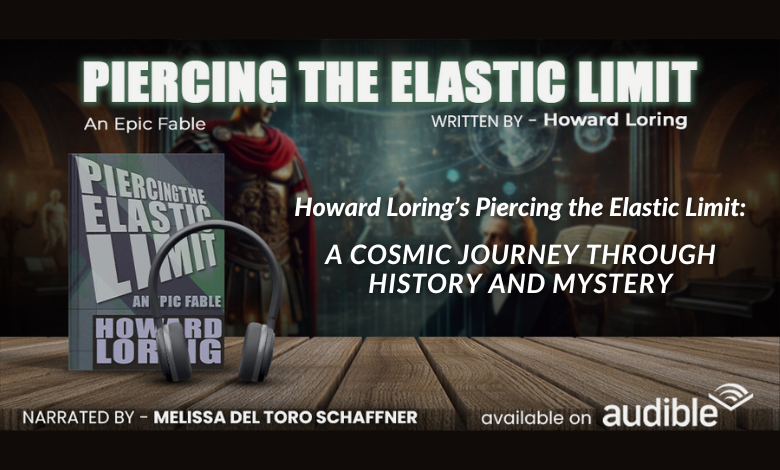Howard Loring’s Piercing the Elastic Limit is a sweeping epic fable that takes readers on an extraordinary journey spanning time, space, and dimensions of reality. At its core, the novel follows the enigmatic figure known only as the ‘Old Man beyond the Portal’ and his fiery redheaded assistant, who together undertake a secretive mission of profound importance: to rescue the imperiled future of their planet. What unfolds is a tale that effortlessly blends myth, history, and cosmic adventure into a single narrative that is as thought-provoking as it is thrilling.
One of the most compelling features of this novel is Loring’s masterful fusion of historical fact and imaginative speculation. The story seamlessly incorporates legendary figures like Julius Caesar, the influential Roman aristocrat; Christopher Marlowe, the renowned Elizabethan playwright and poet; and Robert Schumann, the celebrated Romantic-era composer. These characters are not merely historical footnotes or background details but essential players in a cosmic drama that transcends their earthly lives. Loring’s creative re-imagining adds depth and intrigue, encouraging readers to think about history from new perspectives, as if the lives of these iconic figures were intricately tied to larger, almost supernatural forces shaping human destiny.
The novel’s title, Piercing the Elastic Limit, serves as a powerful metaphor for pushing beyond perceived boundaries—whether of physics, time, or human understanding. This idea is woven throughout the narrative, as the Old Man and his assistant face challenges that require them to transcend ordinary limits, embarking on a quest that tests their resolve and intellect. The “elastic limit” implies a point of no return, a breaking point beyond which transformation occurs. This theme resonates in the personal growth of the characters and the overarching mission to save their world from destruction.
Loring’s use of the fable format adds another layer of meaning. Fables traditionally serve as vehicles for moral lessons and philosophical insights, and here, they allow the author to explore complex ideas in a manner that is accessible yet profound. The simplicity of the fable contrasts beautifully with the vastness of the epic tale, making it easier for readers to engage with intricate concepts without feeling overwhelmed.
The narrative’s pacing is skillfully maintained throughout, balancing moments of intense action and suspense with contemplative passages that encourage reflection. The reader is invited not only to follow the adventures of the Old Man and his assistant but also to ponder the deeper implications of their journey. Questions about fate, free will, and the interconnectedness of all things emerge naturally from the storyline.
Vivid and evocative descriptions transport readers to diverse settings, from ancient Rome to the foggy streets of London, and beyond into fantastical realms that challenge the limits of imagination. Loring’s world-building is detailed and immersive, allowing readers to feel fully present in the story’s richly textured universe.
The novel also explores themes of creativity and artistry, symbolized by the inclusion of historical figures who were pioneers in their fields. Julius Caesar’s political genius, Marlowe’s literary innovation, and Schumann’s musical mastery are portrayed as manifestations of a deeper cosmic order, suggesting that human creativity is linked to the broader mysteries of existence.
In conclusion, Piercing the Elastic Limit is a captivating epic that transcends genre boundaries. It invites readers on a journey that is at once thrilling and intellectually stimulating. Howard Loring’s narrative challenges perceptions of history and reality, offering a fresh and imaginative take on the nature of time, human destiny, and the power of the human spirit. This novel is a must-read for fans of epic fantasy, historical fiction, and speculative narratives that expand the mind and inspire the soul.






Leave a Reply